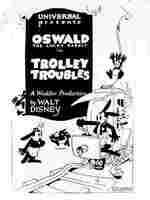Forget ladders, think of your career as a river
Something seemed very wrong with the way I’d been taught to think about my career progression. Like so many of us, I’d heard professional journeys described as climbing a ladder or following a path. But as I moved forward in my work as a journalist, I wasn’t moving in a straight line.

The field I was pursuing, called audience engagement, was relatively new. I certainly hadn’t taken any courses on it in college, and two of the companies I would later work for didn’t even exist when I graduated. How was I supposed to know which path to take when it was still under construction?
I also didn’t see the ultimate goal of my career as reaching the top of the food chain. I have no desire to be a CEO. And I kept meeting talented professionals, people I admired greatly, who viewed the twists and turns of their careers as a drawback, not a benefit.
With an apologetic air, they would talk about how they explored different areas of their work and how they struggled to come up with a simple, clean story to explain their resumes.
So I started telling students to consider their careers, not as a linear progression straight up or ahead, but as a river delta — a fertile area to explore that flows toward an ultimate objective.
The looks of relief on their faces as they realized they don’t have to commit to a one-size-fits-all path clearly showed me that there’s a better story we can use for our work in today’s information economy.
And to be honest, I wouldn’t want to work in a field full of exact duplicates who travel from point A to B with no deviations. It’s diversity of thought and experience that drives creativity and innovation.
So let’s consider what happens when we free ourselves from trying to reach the top of the ladder, and instead carve our own paths as a career river flowing toward our ultimate objective: the ocean.
When your professional destination is no longer a lonely perch but a thriving, wide-open ecosystem fed by the work of others to explore, every twist and turn in your journey changes from a liability to a strength.
Finding your flow
A secret I only fully realized recently: I am not a robot. Some days I have more energy than others, or I’m better able to think of the big picture. And my work history also has periods of great change and some slower spells. Could it be that I don’t need to move through my career at a steady pace, rung by inevitable rung?
Instead, I’ve come to accept that everything happens in its own time. Rather than feeling stuck on a career ladder when I haven’t shifted roles for a while, I can rest secure in the knowledge that a river always flows, no matter how slowly.
As long as I’m learning, I’m moving toward my ultimate goal, or ocean. For me, it’s not about climbing to the top. We can each define our own destinations. Once we do, it becomes clearer which choices will help us reach that ocean.
This also helps with career changes. On a career ladder, you might “lose” a rung or have to start climbing again at a new organization. It feels like a step back. A river’s curves and changes in direction are all part of the journey. What came before informs what flows after. This takes some of the pressure off job-hunting decisions, too.
While a career ladder has only one direction, a career river can create a delta of many different paths, all equally valid to pursue. Not only is it ok to shift directions, it’s expected. We need to give ourselves the freedom to explore what matters to us instead of locking ourselves to one inflexible path.
Navigating obstacles
When I first tweeted about the career river, one of the commenters shared a therapeutic method used in occupational therapy called the Kawa Model . This model uses a river metaphor to see how clients want to live their lives, and includes considering the circumstances that block your progress as rocks in the river.
If you embrace your career as a river instead of a ladder, you’re better able to confront these obstacles. When you reach a ceiling on the career ladder, the only way you can keep going is to shatter it.
When your career river encounters an obstacle, you can go around it, or over it, or carve through it. You may be able to get past what’s blocking your way quickly, or it may take some time, but in either case, you have several ways to get where you’re trying to go.
Not only does this give us more options when our progress becomes blocked, but it also acknowledges the effort and time it takes to break down barriers — and how beautiful the results can be. After all, there’s no Grand Canyon without the Colorado River.
Importantly, too, this reminds us that it’s possible to keep progressing even when we’re stalled or in free-fall. A career ladder that falls is broken. A river becomes a waterfall, and then keeps flowing.
Cooperation, not competition
I’m not the lone wolf journalist you see in movies. I wasn’t interested in winning Pulitzers or breaking the big investigative story solo. (Nor was I one of those rom-com heroines working at a magazine who never seems to file a story.)
In fact, I only became a reporter so I could one day be an editor. What I was most interested in was working with others to make our entire newspaper better. Today, I work on collaborative projects among many newsrooms to create more meaningful and impactful journalism.
So a career model that celebrated stepping on others or pushing them aside to reach my goals never felt right to me. Working with others is central to what I do and what I care about.
No river is truly alone: it’s fed by many tributaries along the way and contributes to other rivers in turn. Every time rivers join together, they become stronger.
My career is richer — not weaker — for having others contribute their expertise.
Ready, set, flow
The stories we tell ourselves matter. If, like me, you need a better framework for describing what you value in your work, here’s how you can begin pursuing your own career river:
Identify your ocean — What will your legacy be? Knowing where you want to contribute will help you visualize what you can do to get there.
Embrace variety — Accept that your career will go through fast and slow periods, and explore the many different paths available to you.
Navigate obstacles — Sometimes it might be better to just go in a different direction than try to clear what’s blocking your way, and that’s fine. What matters is that you can keep going.
Find strength in collaboration — Who has contributed to your career? How are their contributions still present in your work? And who can you help along their own journey? Look for those heading to the same ocean to strengthen your career, and see how you can support others.
A career ladder creates no value except for the person climbing it, while a career river feeds an entire ecosystem. I’d rather live in a professional world of rivers, where we all can go with the flow together.
This article by Bridget Thoreson was originally published on the Zapier blog and is republished here with permission. You can read the original article here .
4 ways you and your company can make flexible work better
Did you know we have an online event about the future of work coming up? Join the Future of Work track at TNW2020 to hear how successful companies are adapting to a new way of working.

The world of work is fast changing. As life expectancy lengthens and labor markets shift, our working lives have become more complicated. The old expectations about how we work have become unsustainable – not least the expectation that we religiously travel to and from a fixed location ten times a week during rush hour, with all the knock-on effects that this has for carbon emissions.
Flexible work has the potential to solve many issues that see people fall out of the workforce. For employees, this means being better able to fit their jobs around other responsibilities, such as looking after children or elderly relatives. For businesses, this means retaining staff and saving the tens of thousands of pounds it costs to replace them .
Yet many remain stuck in positions with rigid working hours. One of the sticking points for employers seems to be that flexible work is equated with the one or two formats that they are familiar with – most often, letting staff work from home or work part-time. So a whole battery of ways in which flexible work could be used to align with the needs of a diverse workforce gets overlooked.
Recent research mapping the various combinations of flexible work found over 300 possible ways in which jobs could be organized flexibly. This includes job shares, compressed hours, term-time working, flexi-hours, and tapered working. There is considerable scope to draw upon this host of working practices.
Here are four ways that businesses can get flexible working to work for them and their staff.
1. Get line managers on board
First and foremost, managers need training in how to manage flexible work. My own research found that line managers are the single biggest block on flexible work uptake. And even where flexible work is supported, too often it is assumed that managers know the unknowable and can just run with new working practices.
But without any investment being made in managers, flexible working arrangements are set up to fail. Alternatively, the buck gets passed onto the flexible worker to make a success of a new arrangement, giving him or her one more task for their workload, and one with a high penalty attached to failure – a stressful experience in itself.
Realistically, achieving this buy-in will also need some nudging, particularly for smaller businesses and sectors where there has been less flexible work. Giving managers access to success stories and practical guidance , backed up by lots of leadership and peer support, is vital.
2. Be flexible about flexibility
Managers and employees need to come together in a safe space to assemble flexible working arrangements that work for everyone, with a real understanding of what is at stake and what is possible. A part of this is the need to get flexible about flexibility – recognizing that circumstances change and that work arrangements may need to be tweaked or even reversed overtime to ensure that they remain fit for purpose.
Flexible work has been used as a management tool to achieve savings by imposing remote or zero-hours contracts on workforces, with little input from those called on to do their jobs differently. So it’s necessary to give people space to make suggestions and give feedback about flexible work. And it is also about making use of a range of flexible working arrangements.
3. Redefine productivity
Flexible work demands a shift away from seeing productivity in terms of being present for fixed working hours. Indeed, the problem of presenteeism – where people feel compelled to show their face at work even if they are ill – only feeds into the UK’s productivity puzzle .
Companies (and managers) need to devise better measures of output: has a project been completed within schedule, did the team work well together, is the report of high quality? These are much more effective yardsticks of success than whether staff clock in at 9 o’clock each morning.
4. Advertise your flexibility
Making flexible work available at the point of hire will widen the talent pools available to employers, as people who already work flexibly will be more likely to apply for positions where they won’t lose a valued part of their contract. The demand for such a move is significant – flexible working consultancy Timewise’s latest Flexible Job Index found that 87% of employees either work flexibly or want to But in 2019, only 15% of UK jobs were advertised as flexible. Employers who ignore this demand will be poorly prepared in the war for talent.
The evidence base for the benefits of well-managed flexible working arrangements is getting more and more compelling. It offers increased retention and productivity, and drops in absenteeism. And it’s not only employers who stand to make business gains from getting good at managing flexible work, employees with a good work-life balance are more motivated and content. Plus, as the latest pay gender pay gap figures show that older workers are seeing the greatest disparities, flexible work is a key tool in creating more age-friendly and equitable workplaces .
On a societal level, by organizing work more thoughtfully we can make inroads into tackling carbon emissions as our car use becomes more efficient. We could see reduced demands on health and social care systems as workforce stress levels fall, and balancing care and work demands become more manageable. But we will only achieve this through good management, a fresh approach to job design, and enthusiasm from all involved.
This article is republished from The Conversation by Jane Parry , Post-Doctoral Researcher, Sociology, Solent University under a Creative Commons license. Read the original article .
Disney’s trouble with Oswald the Lucky Rabbit is a great lesson for startups in a crisis
Like most other companies, my tech- and design-startup has felt the impact of COVID-19. People taking more time with decisions. Growth is pretty much paused in some markets. Teams are working from home and creating new kinds of cultural habits in the textannotat ion”>organization .

We’ve grown from nothing to a company with customers in 130 countries in less than 12 months, and we hadn’t seen the coronavirus coming in any way — like most other startups. However, it’s become crystal clear to me that the way to handle a financial crisis like this is not just about remote work, cutting costs, and focusing as an owner, but also a whole lot about why, you do, what you do. What you want to change in the world. What you could name being an ‘author’ and not just an owner.
Let me explain what I mean by telling you a story…
The story of Oswald the Lucky Rabbit
You might have never heard of Oswald The Lucky Rabbit, but in the late 1920’s he was more famous than Mickey Mouse.
Oswald’s story began when Walt Disney and Ubbe Iwerks — Disney’s star graphic artist — moved to California. Disney and Iwerks had made a name for themselves in Kansas making animated shorts, but when the cartoons proved to be less profitable than they expected, they decided to move west. In Tinseltown, the duo gave birth to Oswald, who became the new darling of the silver screen.
But Disney and Iwerks did not own their creation. Universal Studios owned Oswald, and its executives used this ownership to extort Disney after Oswald became a success. The executives threatened to poach Disney’s best animators if he did not cut down Oswald’s production costs.
Disney and Iwerks were deeply offended, but decided to avoid the legal battle — which they were likely to lose — and to focus on doing what authors do best. They created a new character in response to Oswald. That new character was Mickey Mouse.


Oswald’s story teaches us that what is most valuable in an economy is not what authors make, but their ability to make it. The executives at Universal tried to extort Disney and Iwerks by holding one of their creations hostage. But this was a naïve move.
While legally, Universal owned Oswald, technically they did not own the capacity to author characters like Oswald. That capacity was embodied in the minds of Disney and Iwerks, and this was the key factor that set the duo apart.
Understanding the perspectives of authors and owners is critical to understanding how authors and owners shape the economy. In the 1920s, it would have been easy to look at the success of Oswald and think that the character was where the value lay. But that interpretation, which is the owner’s perspective, is grossly mistaken because the real value was not in Oswald, but in the knowledge, artistry and creativity embodied in Disney and Iwerks.
As further proof of that, consider Disney and Iwerks’ next steps. After Mickey, they continued to push the boundaries of the film industry. Their next major project was a transcendental film: Snow White , the first full-length animated movie. At the time, the technology needed to create a full-length animated film was barely ready, and the project was considered ludicrous.
Nonetheless, Disney invested all of his wealth into the project, and when he fell short, he borrowed money to complete the movie by showing an incomplete version of it to lenders. Disney was willing to lose it all again to achieve his vision.
Actually, when you think about it, what Disney did back then was very much, what we talk about in today’s startup world and growth economy: risking going all-in, daring to fail. This is especially true now in a time of pandemic-induced crisis, where some may freeze because of fear rather than be daring like Disney.
The drivers of luminaries like Disney and Pixar
But the story of Disney and Iwerks is not an isolated example of the economic superiority of authoring vis-à-vis owning. A similar story can be found in the story of Pixar, where Ed Catmull, John Lasseter, and others pushed the vision of creating computer animated movies at great risk.
Making a computer-animated movie in the early 1990’s was as ludicrous as making a hand-drawn movie in the 1930s. But that ludicrousness did not stop Lasseter, who was unable to execute his vision at The Walt Disney Company and joined Ed Catmull in the startup that would later become Pixar. Together they triumphed with Toy Story , because among other things, they spent more than a decade developing the tools needed to author computer-animated films.
Ironically, they suffered a similar fate than Disney and Iwerks, since The Walt Disney Company owned the rights to the characters in Toy Story . But once again, authors prevailed by punching back with new creations. In this case: Monsters Inc . and Finding Nemo . Ultimately, the Walt Disney Company had to accept the creative superiority of Pixar, and decided to join them instead of fighting them.
But why would anyone want to be an author, and go through the stress, grief, and heartache required to make something at great risk? Simple monetary rewards are not the primary driver of luminaries like Disney, Iwerks, or Lasseter. Authors are looking to transcend, not because of ego, but because they want to contribute something useful, memorable, thought-provoking, or inspired back into the world that inspired them.
So while Universal executives saw Oswald as a way to make cash, Disney saw cash as a way to make history. Disney was authoring the history of animation, just like Lasseter would decades later. Being the richest guy in the cemetery was not what their work was about.
Owner and authors in the startup and growth-world
Certainly, there is a role for owners in the economy. Owners can help scale businesses and manage companies during the long periods of decay that follow the creative thrusts that originate firms. But the wealth of the wealthiest owners, the wealth of Carlos Slim, Warren Buffet, or George Soros, are pale accomplishments in comparison with the oeuvre of the greatest authors: the paintings of Picasso, the plays of Shakespeare, the induction laws of Faraday, the personal computer of Jobs and Wozniak, the cars of Ford and Benz, and the web of Tim Berners-Lee. For society, at least, it’s authors who create value.
At JumpStory we may be owners, but we also emphasize why our startup has put into the world all of the time — especially during the current COVID-19 crisis. Our team is not motivated by making money, but by transforming an entire industry — that of the image and video space.
When we grow, we grow, because we’re reinvented what it means to search for stock photography online. We’ve taken away the boring and cliche-looking images, and we’ve included diversity and authenticity into an otherwise boring and old-fashioned space. Find your own drive and make it clear to the world.
I truly believe that this is vital for growth-companies in the future. This ability not only to scale businesses as owners, but also to create something meaningful that lasts as authors. After all, those who really shape economies are those who change what economies make.
So you’re interested in growth? Then join our online event, TNW2020 , where you’ll hear how the most successful founders kickstarted and grew their companies.